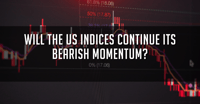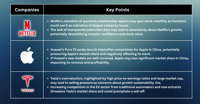When we talk about low risk, terms like low drawdown, low returns and slow growth come to mind. However, I like to use another unconventional measurement which is, “if you follow this strategy provider, are you able to sleep soundly at night?”
If taking a trade or in this case, following a strategy provider makes you unable to sleep soundly at night, then perhaps the risk you are taking is above your risk tolerance.
In this article, I’ve chosen three criteria a low-risk strategy provider should meet:
- Maximum Drawdown
- Average Returns Per Month
- Drawdown Recovery Period
Maximum Drawdown
Drawdown is peak-to-trough decline during a specific period for a fund. A drawdown is usually quoted as the percentage between the peak and the subsequent trough.
For example, if a trading account has $10,000 in it, and the funds drop to $9,000 before moving back above $10,000, then the trading account witnesses a 10% drawdown. $1,000/$10,000 = 10%
Similarly, if a trading account has $10,000 in it, and earns a profit of $3,000 before swiftly losing $5000, the drawdown is $3,000/$15,000 = 20%.
Therefore, a risk-averse strategy follower will want to follow a provider which has low drawdown to minimise potential losses and reduce volatility.
Note: Drawdown is not equal to loss. A strategy provider can have a loss of 20% but drawdown could be 27%. This is due to most traders viewing losses in terms of their purchase price ($100 in this case), and not the peak price the investment reached after entry.
Average Returns Per Month
As the saying goes, “high risk - high return, low risk - low return”. We should be looking at the average returns per month to be more than drawdown.
As a rule of thumb, the industry practice is to have average returns per month to be half of the maximum drawdown. This means that if your maximum drawdown is at 4%, then the recommended return will be 8%.
Drawdown Recovery Period
This is the time/period taken for the fund/provider to recover from his or her drawdown. In my opinion, a short recovery period will provide a strategy follower with more confidence in the strategy provider.
One important thing to consider is whether the provider should rely on riskier bets to improve performance or shorten the drawdown recovery period.
Fullerton Markets Research Team
Your Committed Trading Partner














